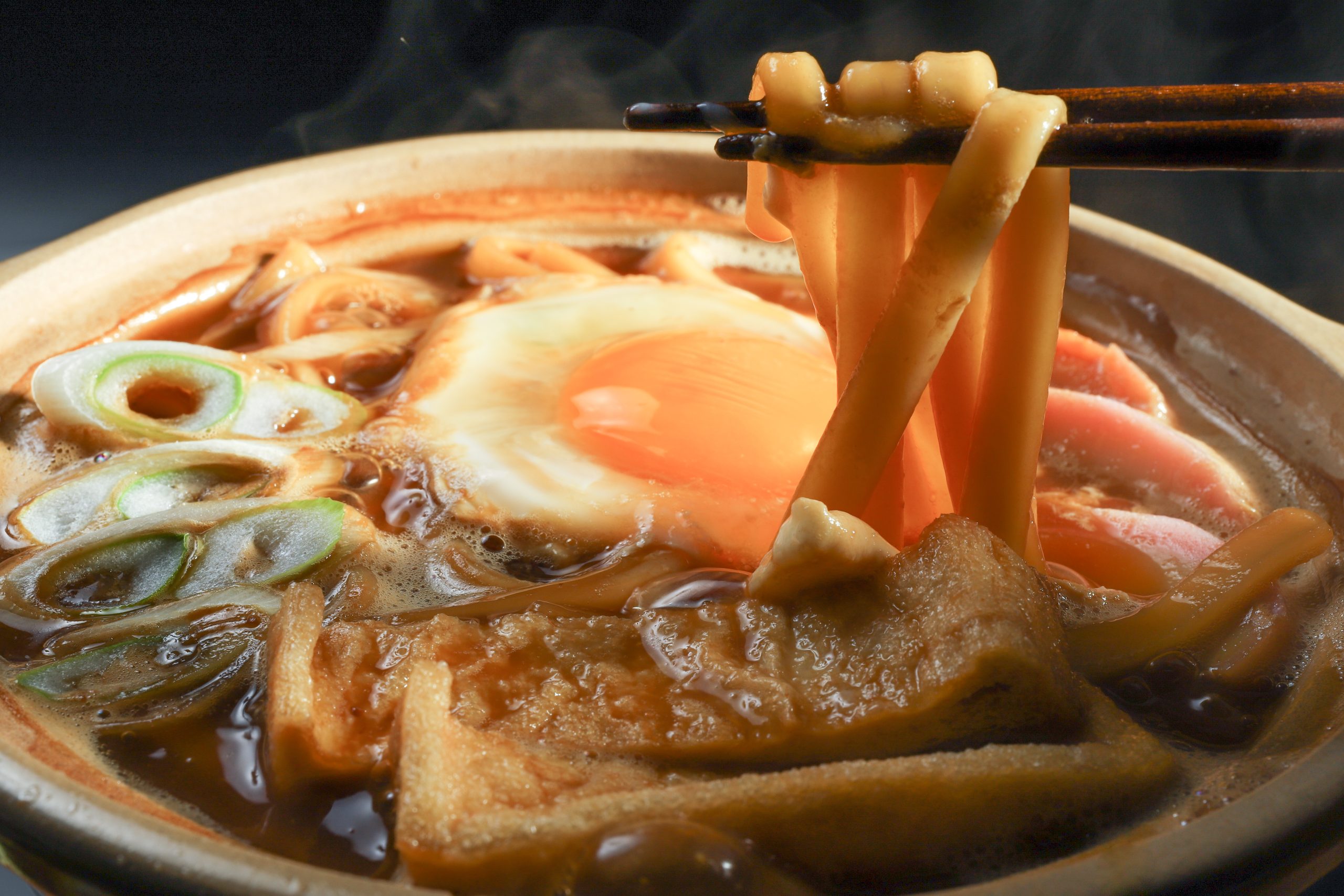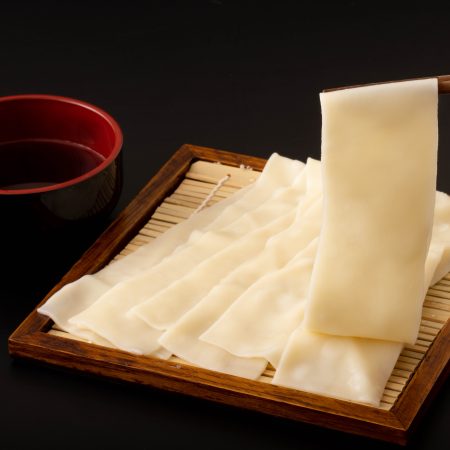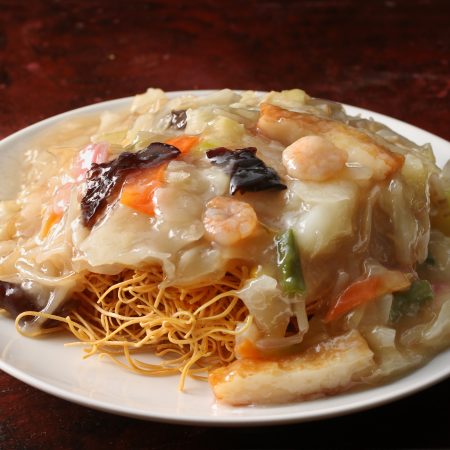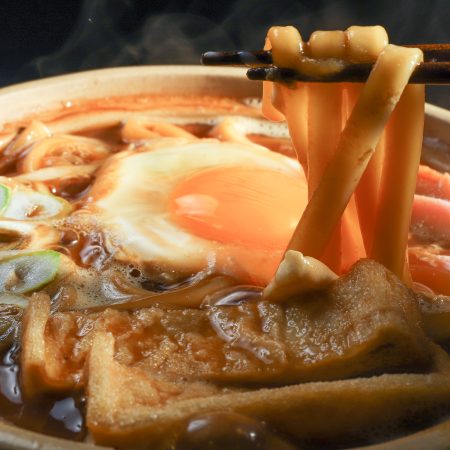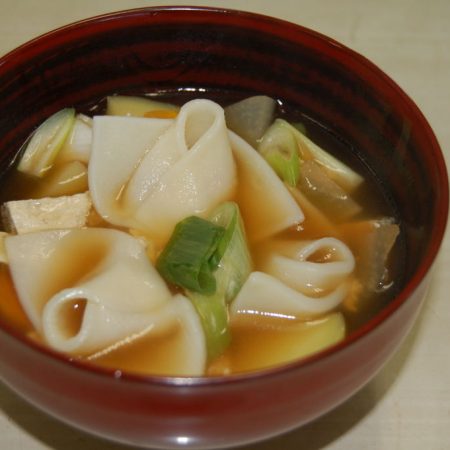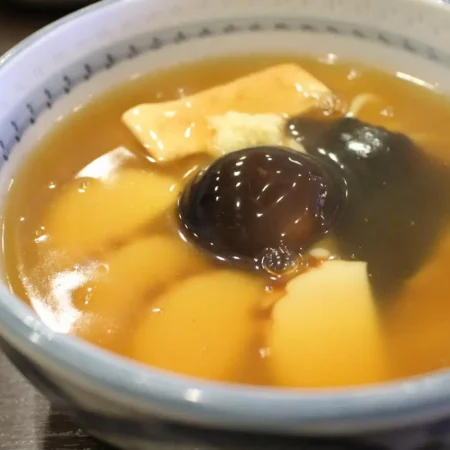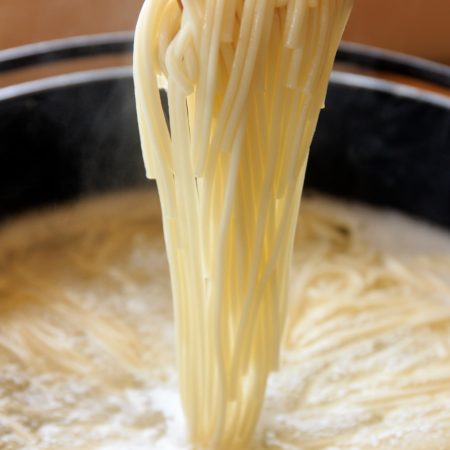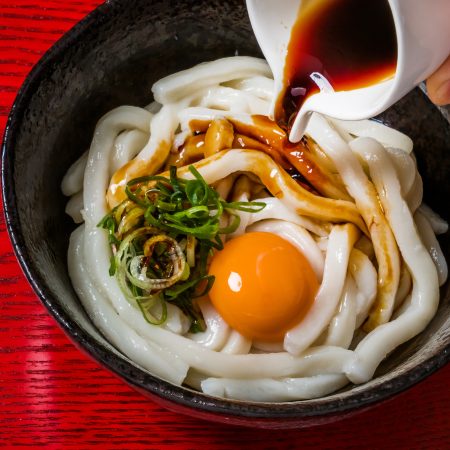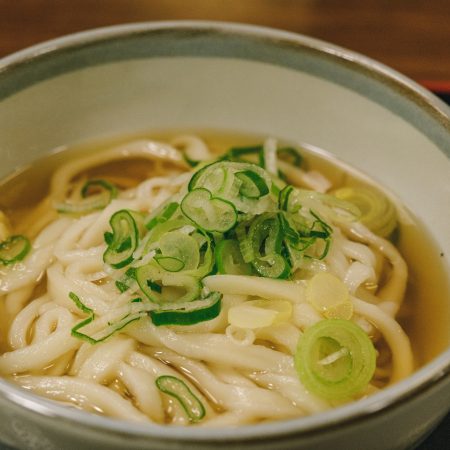Miso-nikomi Udon" is one of the representative noodle dishes of Aichi Prefecture, along with "Kishimen" (flat noodles).
It is made by simmering udon noodles in a broth made with Hatcho miso paste. Miso-nikomi udon" used to be a home-style dish, but it is said to have been served at restaurants in Ichinomiya City during the Meiji period (1868-1912). Later, it is said to have become a common dish in the area centering on Nagoya City.
Hatcho miso, a representative seasoning of Aichi Prefecture, is a soybean miso with a rich flavor and color that originated in Hatcho Village (now Hatcho-cho, Okazaki City), located eight chou (approximately 870 meters) away from Okazaki Castle, the residence of Tokugawa Ieyasu. It is made almost entirely from soybeans, and is fermented and aged for a long period of time.
Hatcho miso is more nutritious than other types of miso, and in the Mikawa region, the culture of aka-miso (red miso) has taken strong root due to its health benefits. Therefore, there are many local dishes using red miso in Aichi Prefecture, and "Miso-nikomi Udon" is one of the representative dishes.
Udon, like hoto, is made with only flour and water, without salt. The reason for this is that the udon does not become soft and remains firm even after being stewed without salt.
The most distinctive feature of "Miso Nikomi Udon" is the rich Hatcho Miso broth, but the noodles are also very satisfying because they are cooked fresh and have a strong texture.
The noodles are not boiled separately as in the case of ordinary udon, but are simmered together with the broth, using only flour and water.
Because the noodles are cooked quickly, they remain more or less firm, but the noodles are so thick and firm that first-time eaters may think they are undercooked.
However, the thick red miso-based sauce and the firm noodles are what Nagoya's famous "Miso Nikomi Udon" is all about, and the intense crunchiness of the noodles is their true texture.
In addition to the noodles, Miso-nikomi Udon is served with a variety of other ingredients.
Chicken, deep-fried tofu, eggs, vegetables, rice cakes, fish cakes, dried shiitake mushrooms, and green onions are just a few examples, but what to add depends on the household or restaurant.
However, it is common to add many ingredients, and there is no such thing as just soup, noodles, and dried bonito flakes, as in "Kishimen".
Since it contains many ingredients, it is sometimes eaten with rice as a nutritious side dish.
In addition, rice is sometimes added to the broth after eating udon noodles to make ojiya (rice porridge), and the taste of rice soaked in the rich "Miso Nikomi Udon" broth is exceptional.
Miso nikomi udon" is stewed in an earthenware pot, but the lid is not put on the pot when it is heated.
The lid of an earthenware pot for "Miso Nikomi Udon" does not have a hole to let the steam escape, and it cannot be stewed with the lid on because it will spill over.
The reason why there are no holes in the lid is because it is used as a small plate for serving the noodles.
Udon noodles that have been simmered are so hot that they need to be served in a separate dish and cooled down a little before being eaten.
The earthenware lid for "Miso Nikomi Udon" was born out of such needs.
Since there are no holes in the lid, the soup does not spill out, and the udon can be placed on the lid as a small plate.
In addition, by putting the lid on after cooking, it can play the role of keeping the food warm, making it truly a lid for stewed udon.

